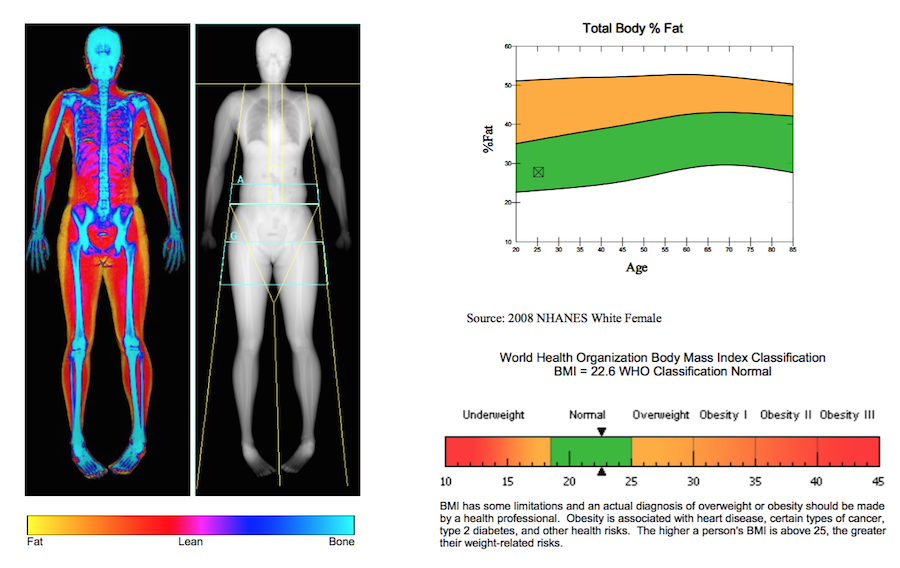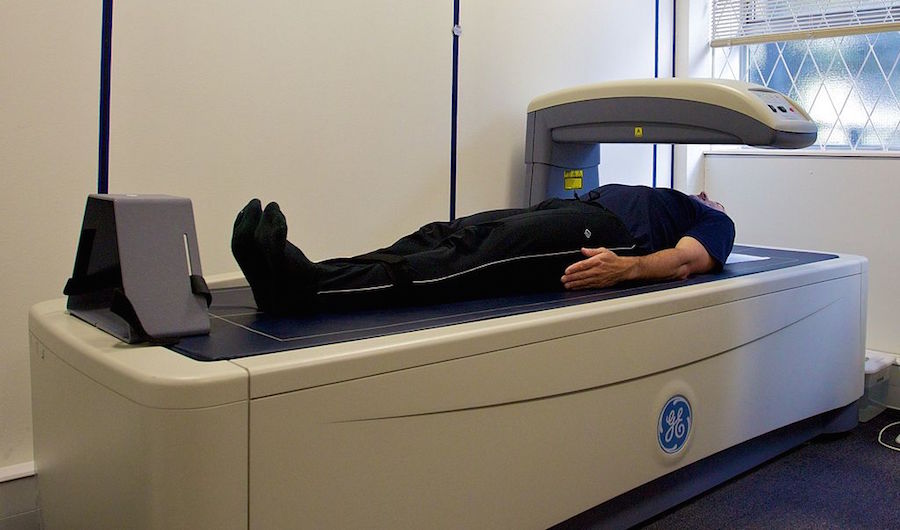Yes. That is my body, in all its glory.
In a never-ending quest to make us spend more money, the health and beauty industry comes up with creative ways to tell us we’re fat, and correspondingly creative ways to tell us how to lose it. Sometimes it seems that the city’s health-conscious residents are more susceptible to trying out the latest fitness fads than they are to catching SARS.
Coconuts Hong Kong’s associate editor Laurel Chor is going to save you the trouble by sweating her way through all the latest fads in this new five-part, biweekly series. We review anonymously and pay for ourselves.
As we run in one place on the treadmill, fight imaginary enemies during Muay Thai class, or work so hard until we pee ourselves in a Crossfit session, we often judge the fitness progress we’ve attended based on the scale or the tightness of our trousers.
But nay, this is not accurate enough, say some of the health-obsessed. Our weight doesn’t matter, and our body’s bloatedness comes and goes like the tide. What we really need to know is exactly how many grams of fat and muscle you have on each limb!
A caliper test – in which someone pinches your soft bits to see how pinchable you are – does not give a precise enough reading of body fat either, according to some. The solution? The scary-sounding dual X-ray absorptiometry scan, also known as the DEXA or DXA scan.
It was originally designed to check patients’ bone density, and is now used by athletes to see their exact muscle and fat composition.
I signed up for this test at the Active Health Clinic of HKU’s Institute for Performance, located at the Stanley Ho Sports Centre in Pok Fu Lam.
For HKD380, they will scan your body, give you the results, and explain to you what the all the scientific jargon means. If you pay upfront for two scans (so you get a before and after), it’s HKD700.
I arrive for my appointment and the friendly and patient exercise physiologist guides me through the procedure, having me sign some disclaimer forms first (I will be exposed to insignificant amounts of radiation, he explains).

A DEXA scanner. (Photo: Nick Smith via Wikimedia Commons)
First I change into more comfy clothing (do not wear any metal – that includes bra underwires, ladies). Then I laid down on the scanner and the physiologist tied my feet together, so that my legs were in the optimal scanning position. Finally, I tried not to fall asleep while I waited for the machine, which clicked and whirred and did its thing for the next ten minutes or so.
When the scan was done, the physiologist sat down with me and the results printout, and explained what all the numbers, tables and graphs meant.
The verdict? My entire body is 27.8 percent fat, which is “normal”. I had been deemed to have only 20 percent body fat by a recent caliper test, but DEXA scans tend to give higher results since it measures fat in every crevice of your body, including your brain. The printout includes a colour-coded image of your body, allowing you to see exactly where your fat, muscle, bones and lungs lie.
I have a solid 42 kilos of muscle, which was reassuring since the physiologist keeps life-like plastic models of both a kilo of muscle and a kilo of fat on his desk. (It looks exactly as disgusting as you would think, with the fat, of course, taking up several times more space than the muscle despite being the same weight.) As expected from a right-handed person, the right side of my body – including my “trunk” – has more muscle.
I was also told that I have very dense bones – probably thanks to a 13-year rugby career and a lifelong love of dairy products – which means I am at lower risk for osteoporosis. Oddly enough, I have way more fat – 630 grams more – on my right leg than my left… And now the mystery of why my shorts always ride up one leg but not the other has finally been solved. Thanks, science!
You’re in and out in of the test in half an hour, and you’re left suddenly acutely aware of how you’re a bag of bones, muscle and fat.
In two to three months’ time, I’m supposed to go back and see how my body’s changed, whether I’ve been hitting the gym hard or sitting on the couch and discovering joy at the bottom of gelato cups.
The test is quick, not prohibitively expensive and surprisingly informative and educational. Just be prepared to find out more about your body than you ever have before.
What: Full-body DEXA Scan
Where: Active Health Clinic, HKU Institute for Performance, Henry Fok Health & Fitness Complex, Stanley Ho Sports Center, 10 Sha Wan Drive, Sandy Bay, Pok Fu Lam. (Google Maps)
Price: HKD380 for one, HKD700 for two when paid in advance
Tel: (+852) 2872-1208
Website: www.ActiveHealthClinic.hk
Related stories:
Fitness Fad Fridays: Embracing our inner circus performer at the Aerial Arts Academy
Fitness Fad Fridays: ‘Designing my body’ without breaking a sweat in a HYPOXI pod
Fitness Fad Fridays: Cycling, dancing and clubbing all rolled into one at XYZ






Reader Interactions